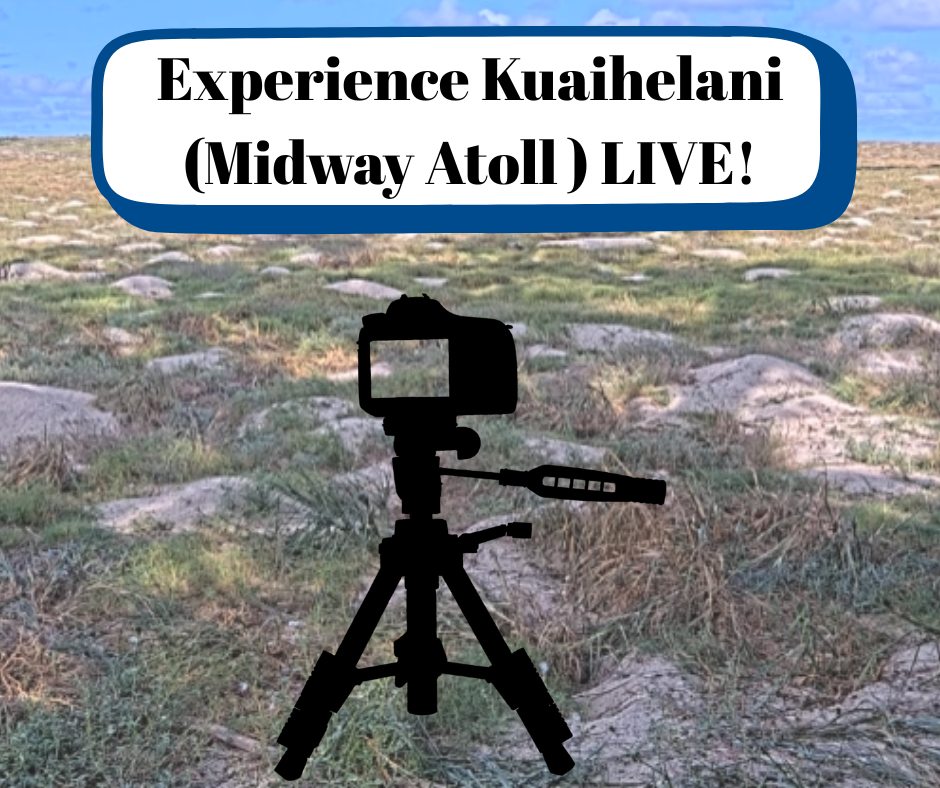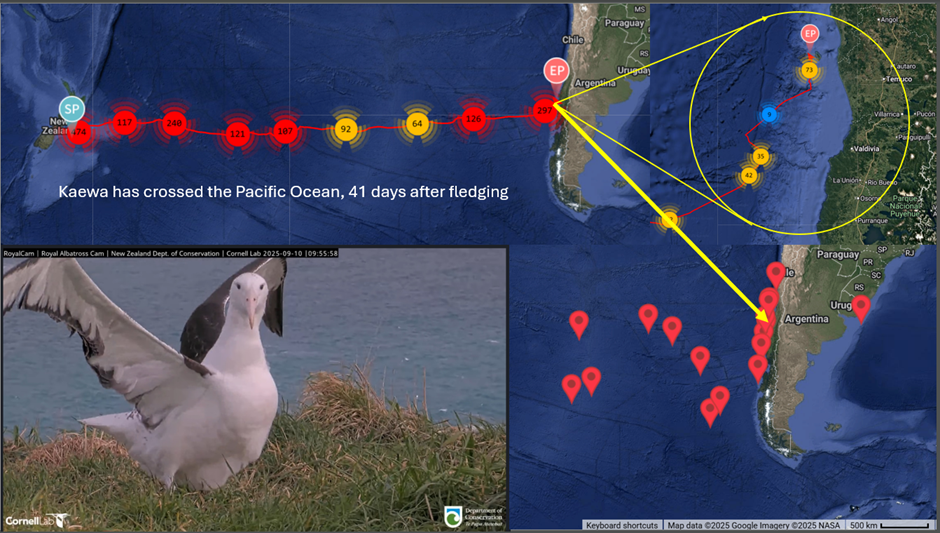
Illustration from the Friends of Midway Atoll
The introduction of StarLink has allowed a 24-hour live-streaming camera (“Midway Cam”) to be placed on Midway Atoll National Wildlife Refuge by the Friends of Midway Atoll in early October to follow the breeding fortunes of the island’s Laysan Albatrosses Phoebastria immutabilis and other seabirds. The first returning Laysan Albatrosses and Black-footed Albatrosses P. nigripes have already been spotted on the live cam. Many Bonin Petrels Pterodroma hypoleuca can be seen after dark, as can the introduced – and unwelcome - House Mouse that still persist after a failed eradication attempt in 2023.
“Kuaihelani is the ancient Hawaiian name for Midway Atoll. You will now be able to enjoy the full breeding cycle of the world’s largest breeding colony of Laysan (Mōlī) and black-footed (ka‘upu) albatross. Starting in late October or early November, adult albatross will begin returning to Kuaihelani to reunite with their life-long mates. During this time, courtship will abound with mates reuniting after their absence from the island for several months and soon thereafter copulating and building a nest for their single egg. Mated pairs will soon settle into the exhausting effort of egg laying, incubation and then feeding their growing chicks until their eventual dispersal (fledging) to sea from late June to early August. Soon after the mated pairs arrive and begin nesting, single, mostly younger birds arrive and spend months dancing and courting others in hopes of finding their forever mate. Most of these birds return to the same vicinity where they were raised and will spend their lives breeding in the same neighbourhood as their parents. You will see Laysan albatross across the viewshed and in the distance you will see scattered black-footed albatross, but you may also see at any time the endangered Laysan duck (koloa pōhaka), white terns (manu-o-Kū), Pacific golden-plovers (kolea), ruddy turnstones (ʻakekeke) and possibly overhead red-tailed tropicbirds (koaʻe ʻula) doing their magnificent aerial mating dance. After the albatross leave the island, we will reset the camera so that you may enjoy the nesting of white terns and other birds until the eventual return of the albatross. And don’t miss the evening spectacle as the Bonin petrels (nunulu) arrive by the thousands to attend to their nest sites in excavated underground burrows for most of the year.”
“To view at the highest quality: play the video, click the settings cog icon on the bottom-right of the video, then select quality 1080p”.

Kaewa reaches the Humboldt Current, illustration from the Royal Cam Community Discussion group
Over in New Zealand the “Royal Cam” at Pukekura/Taiaroa Head follows a breeding pair of globally Endangered Northern Royal Albatrosses Diomedea sanfordi each season. The camera’s 2024/25 chick "Kaewa" has fledged and has been tracked on a 41-day flight across the Pacific to the Chilean coast of South America via GPS with updates of its position posted to Facebook and to here. A competition is held each year to name the Royal Cam chick.
John Cooper, Emeritus Information Officer, Agreement on the Conservation of Albatrosses and Petrels, 03 November 2025

 English
English  Français
Français  Español
Español